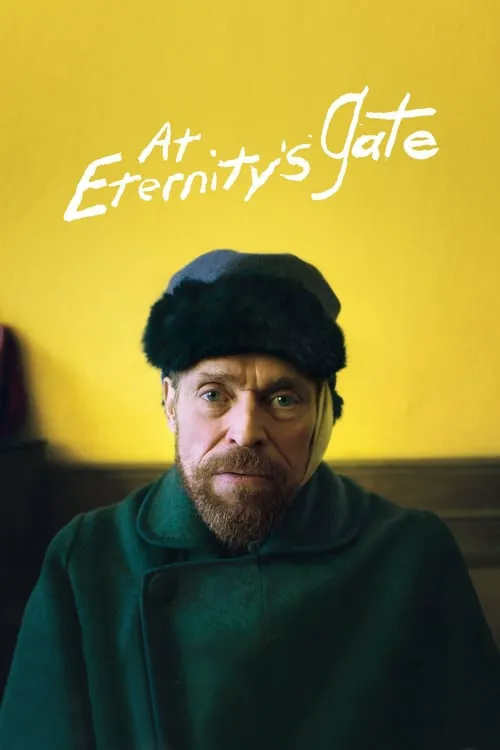At Eternity's Gate

Plot
At Eternity's Gate, directed by Julian Schnabel and released in 2018, is a poignant and deeply humanistic film that delves into the turbulent life of Vincent van Gogh, one of history's most celebrated artists. The movie, loosely based on the artist's life, is set in Arles, France, during the late 19th century, a period of significant turmoil in Van Gogh's life. The film begins with Vincent Van Gogh (played by Willem Dafoe) arriving at a station in Arles. He is a man driven by his passion for art, yet constantly plagued by the demons of anxiety, depression, and self-doubt. His arrival in Arles marks a significant moment in his life, as he seeks to find inspiration in the breathtaking landscapes of southern France. Upon his arrival, Van Gogh takes up residence in a small boarding house near the Rhone River. He soon becomes enamored with the vibrant colors and textures of the natural world, which he depicts in vivid detail through his paintings. The film showcases Van Gogh's intense focus on his craft, as he spends hours and even days painting the same scenes, driven by an obsessive desire to capture the essence of what he sees. However, Van Gogh's creative fervor is soon disrupted by his growing struggle with mental illness. The film sensitively portrays his episodes of anxiety, paranoia, and self-loathing, which frequently erupt into violent outbursts and despairing moments of introspection. The turmoil is compounded by his strained relationships with those around him, particularly Paul Gauguin (played by Oscar Isaac), a fellow artist who has taken up residence with Van Gogh. Gauguin's presence in the film serves as a catalyst for the exploration of Van Gogh's inner world. The tension between the two men is palpable, as Gauguin's artistic ambitions and Van Gogh's struggles to express himself create an atmosphere of mutual suspicion and jealousy. Despite their differences, they share a deep respect for each other's talent and a sense of camaraderie born of their shared experiences as outsiders. The film also explores the complex and often fraught relationship between Van Gogh and his brother Theo (played by Rupert Friend). Theo, an art dealer, is Van Gogh's confidant, supporter, and financial benefactor. However, their bond is strained by the pressures of Vincent's illness and the weight of expectations placed upon him. The scenes between the two brothers are marked by a deep sense of empathy and understanding, as well as a growing sense of desperation as Vincent's condition deteriorates. Throughout the film, Schnabel masterfully captures the essence of Van Gogh's art, transporting viewers to the sun-drenched landscapes and cypress trees that have become synonymous with his style. The cinematography is breathtaking, with sweeping shots that capture the beauty and fragility of the natural world. The use of color is particularly noteworthy, as the film's palette reflects the vibrant hues of Van Gogh's paintings, which seem to leap off the screen. The film's central performance, given by Willem Dafoe, is nothing short of breathtaking. Dafoe brings a depth, nuance, and vulnerability to the role of Van Gogh, capturing the full range of his emotions and experiences. His portrayal is both heartbreaking and profoundly moving, as he conveys the artist's tortured inner world with unflinching honesty. Ultimately, At Eternity's Gate is a film about the human condition, about the struggle to create meaning in a seemingly indifferent world. It is a testament to the transformative power of art, which can capture and convey the deepest emotions, hopes, and fears of human experience. As the film draws to a close, the viewer is left with a profound sense of sadness and loss, knowing that Van Gogh's life was cut short in the midst of his creative flowering. Yet, even in death, Van Gogh's art continues to speak to us, a testament to the indomitable spirit of creativity and the enduring beauty of the human experience.
Reviews
Recommendations




